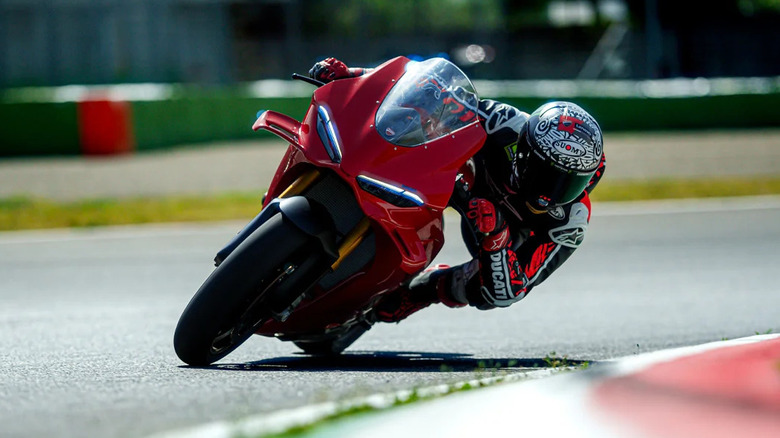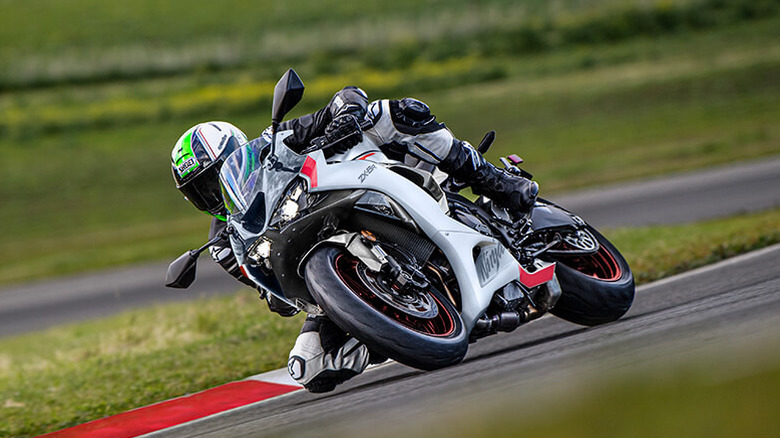600cc Vs. 1000cc: Which Is Better For Motorcycle Racing? Here's What Riders Say
Among track-going motorcycle riders, there's a debate as to which kind of bike is better for racing: a 600cc bike or a 1000cc bike. On the one hand, smaller 600cc motorcycles are typically lighter than their 1000cc rivals. The 636cc Kawasaki Ninja ZX-6R, for example, weighs around 430 pounds, while the larger 998cc Ninja ZX-10R weighs just over 450 pounds. On the flipside, there's a big difference in power: the ZX-6R makes a claimed 127 hp and 52.1 lb-ft of torque while the ZX-10R leaps up to 196 hp and 83.9 lb-ft. This pattern is typical for most brands, with bikes in the 600cc segment weighing less but being down on power, while liter bikes offer more power but at a weight penalty. So, which one is the right bike for racing?
While there are plenty of intimidatingly fast 600cc motorcycles, ex-British superbike racer and track-riding instructor Taylor Mackenzie claims that they're more forgiving, especially for new track riders. Less power means that new riders are less likely to spin the rear tire when exiting corners. Throttle application, according to Mackenzie, requires a lot more attention on 1000cc bikes; otherwise, a rider could easily cause a slide. But it's not exactly bad news for 1000cc bikes, as the extra power and wider powerband pay big dividends in terms of overall performance, especially at higher levels. Riders who are more experienced, more confident, and ready to ride faster will likely do better on 1000cc bikes.
Racing as a newcomer versus racing as a pro
If you're interested in signing up for your first track day, it's probably a bad idea to go with a super powerful liter bike. On top of the difficulty of managing a more powerful bike, it's worth noting just how much more expensive they are. A Honda CBR600RR like the one we tested in 2024, for example, currently has an as-new price of $11,499 (plus $600 destination fee). In comparison, the Honda CBR1000RR we reviewed this year has an MSRP of $16,999 (before $775 destination fee) — a much steeper cost of entry. According to riders like Mackenzie, tires can wear down quicker on the larger, more powerful 1000cc bikes, too, so each race may cost you a little bit more as well.
At the highest levels, racing in MotoGP requires maximum top speed, so those teams naturally use 1000cc motorcycles. They top out around 230 mph, while other intermediate series like Moto2 and Moto3 use smaller bikes with less power and lower top speeds. But the cost of entry and tires are probably one of the lowest priorities on MotoGP teams' minds: Winning is the main objective, and you do that by riding the fastest bike possible. In the end, which size bike you'll want to go racing on depends on the kind of racing you want to do and how much experience you've got on the back of a motorcycle.

